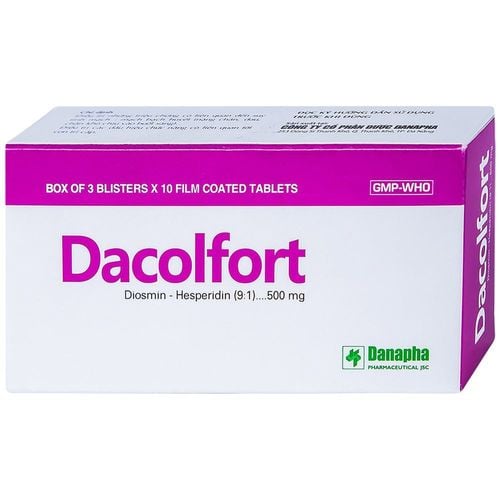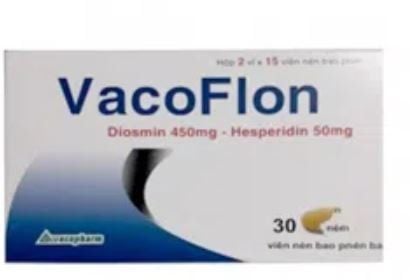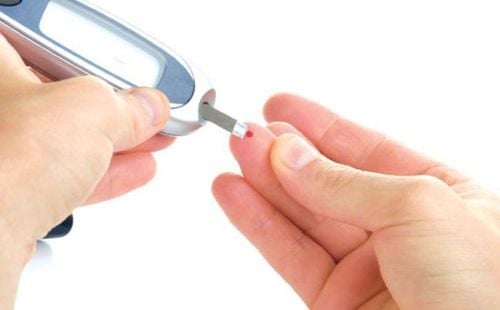This is an automatically translated article.
Venous stasis dermatitis occurs in patients with chronic venous insufficiency. Symptoms of the disease include itching, hyperpigmentation, peeling of the skin and possibly even sores. Venous stasis dermatitis is diagnosed clinically. And the treatment of this condition relies on treating chronic venous insufficiency while preventing the occurrence or progression of associated ulcers.
1. Dermatitis due to venous stasis - Early sequelae of venous insufficiency
Stasis dermatitis is one of the common inflammatory skin diseases that often occurs in the lower extremities, this is also considered as an early sequelae of chronic venous insufficiency with cases of venous hypertension. At the same time, dermatitis due to venous stasis is also a precursor to venous leg ulcers and fatty fibrosis.
Inflammation of the skin caused by venous stasis is also known as venous melaleuca and affects a lot from the calves to the ankles. Because the lower extremities only have one-way valves, they play an important role in the circulatory system.
Stasis dermatitis is quite common in people over the age of 50. Because as age increases, the function of the one-way valve of the blood vessels in the legs tends to decrease or even this valve may stop working.
Long-term stagnant skin inflammation will cause many obstacles to the patient's daily activities. However, medication can be used to reduce symptoms as well as prevent the development of more severe disease.
2. What causes stasis dermatitis?
Venous stasis dermatitis is mainly caused by blockage of the veins. This condition is also known as chronic venous insufficiency or venous insufficiency. A blockage in the body's blood vessels causes blood flow to be blocked and excess pressure builds up. This pressure will lead to damage to the capillaries or small blood vessels and lead to leakage of blood under the skin.
When stasis dermatitis occurs in the leg veins with valves having only one direction of flow. The veins in the legs are responsible for bringing blood back to the body, and these valves are responsible for preventing blood from flowing back up.
If the function of the blood vessels is damaged, blood will return from the legs to the heart and cause a buildup in the veins around the legs. Because the blood collected contains a lot of carbon dioxide but not the kind of oxygen that the skin tissues need.
When blood is not moved to the heart, the skin around the feet will have difficulty receiving oxygen, causing stagnation.
People who may be at risk of stasis dermatitis such as: patients with symptoms of circulatory disorders, patients with high blood pressure, venous insufficiency, heart failure, kidney failure, blood vessel blockage , obese or overweight . Furthermore, people with an unhealthy lifestyle also have an increased risk of developing the disease: those who sit or stand for a long time or those who are sedentary or sedentary, or those who consume too much food. eat high fat,...
3. Signs and symptoms of stasis dermatitis
In the early stages of stasis dermatitis, there is often an eczematous lesion with signs such as erythema, peeling, exudation and scaly discharge. When these signs develop, the condition is aggravated by superinfection or by contact dermatitis with various treatments.
When skin hyperpigmentation and red-brown discoloration may occur, venous stasis may occur and precede the development of pruritic dermatitis. This is followed by secondary lesions and hyperpigmentation.
When chronic venous insufficiency and dermatitis occur at the same time due to inadequate intake, it will cause the sites of stasis dermatitis to progress to skin ulcers, chronic edema, fibrous or fatty skin.
The condition of fibroids will make the patient feel pain due to inflammation of the seminal vesicles. Severe cases can cause the legs to have an inverted pin-shaped shape in the calves and at the same time narrow at the ankles.
4. Diagnosis of stasis dermatitis
To diagnose stasis dermatitis, the doctor will observe the symptoms appearing on the skin and will ask about the patient's medical history. Conditions such as blockage of blood flow or heart disease or damage to the skin can be an important suspect in the diagnosis of stasis dermatitis. However, a definitive diagnosis of stasis dermatitis will be made by tests such as: blood tests, testing for allergic reactions of the skin, Doppler ultrasound to determine blood flow, and checking the condition of the heart. ..
5. Treatment of stasis dermatitis
The treatment of stasis dermatitis helps to control the uncomfortable symptoms of the patient. The patient can be treated to reduce swelling and tenderness by compressing the leg with varicose socks. In addition, you can apply a sock to your feet to improve blood flow and deal with swelling. In addition, the patient can reduce swelling by elevating the legs to the chest, and this habit also improves blood flow from the legs to the heart.
Patients can use moisturizers to soften the skin or use ointments containing corticosteroids. However, when using these types, it is necessary to consult a doctor. Because long-term use of these drugs can cause side effects. Patients should protect the wound should not be exposed to outside air. And should be replaced with regular wound.
Treatment of venous insufficiency must be performed by a dermatologist in conjunction with leg elevation and the use of compression stockings
With acute stasis dermatitis characterized by crusting, fatty fluid, and If the ulcer is superficial, continuous water compression should be applied. Lesions oozing fluid should be treated with hydrocolloid adhesives which can assist in this condition.
Ulcers can be treated with compresses and dressings with zinc oxide or other dressings can also be effective. Outpatient ulcers can heal with zinc-gelatin or duct tape.
When using bandages, the patient needs to change the bandage 2 to 3 times a day, but when the ulcer heals, it can be changed 1 or 2 times a week. After the ulcer on the skin has completely healed, the patient should be used with an elastic before the patient takes up a standing position. This type of dressing is used to reduce edema and this plays an important role in the treatment of the disease.
In case of cellulitis, it is necessary to use antibiotics to treat. Topical antibiotics will bring good results in the treatment and condition of skin ulcers. When the skin is edematous and swollen with inflammation, a skin graft may be required in cases where the ulcer is quite large.
Stasis dermatitis is usually quite sensitive to direct irritants or substances that are likely to cause local allergic reactions. Therefore, patients should not use a combination of many topical medications or over-the-counter treatments.
6. Some remedies for stagnant skin inflammation
In addition to treating stasis dermatitis, the patient needs to change some habits in life to help improve the condition better.
Exercise to raise the legs above the heart to improve blood flow and prevent blood clots in the blood vessels. Do not stand, sit for long and too long. If moving between activities to limit this condition.. Regularly exercise to improve blood flow in the body. Use clothes that are comfortable in size. Avoid using products that can cause allergies or skin irritation.
Please dial HOTLINE for more information or register for an appointment HERE. Download MyVinmec app to make appointments faster and to manage your bookings easily.













